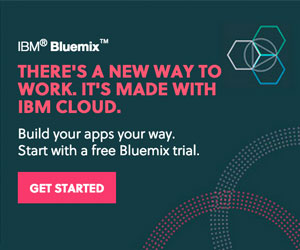
Q: Will fintech force the banks to change?
ANSWER: YES
Be it blockchain or mobile loans, fintech innovation is happening, and the old guard needs to get on board or face falling behind. Traditional banks that embrace the technological and cultural change fintech is forcing on them are also more likely to see their business grow alongside it.
Some banks are getting the picture, learning the tools of the fintech trade by partnering with and investing in fintech startups and incubators instead of trying to build the technology starting from scratch.
Consider a recent move by CIBC to set up the “C-Suite” at MaRS in Toronto, a space physically separated from its corporate headquarters. The office has fewer regulations, giving developers breathing room to create new products for the bank, including its Apple Watch app.
Aayaz Pira, Senior Vice-President, CIBC Digital Retail & Business Banking, explains that the team focuses on client experience only. “It’s very important that we foster a test and learn environment. While we enjoy great successes some projects never make it off that ground – and that’s OK.”
Others seek the expertise of startups through competitions such as “The Next Big Idea in Fintech” by BMO and Ryerson University’s DMZ, or collaboration spaces hosted by Boston’s Workbar and Digital Credit Union, one of the largest credit unions in the U.S.
While the big banks are generally doing a good job of delivering the right product mix for the masses, “there are some areas for improvement,” says Sean Cooper, a consumer financial journalist. Cooper cites fintech firms such as online lender Grow and robo-advisor WealthSimple as having success to date in “filling the gaps” left by traditional banks.
Many banks are also choosing to invest directly in fintech players to gain market access. For example, Goldman Sachs is an investor in Boston-based Circle, an international money transfer app that converts between local currencies and Bitcoin, with a separate division in China. Other investors in Circle include Baidu and Beijing-based investment firm IDG Capital.
Forbes’ fintech expert Laura Shin says that if Circle successfully adds the renminbi as an available currency, it could tap into a potentially lucrative stream of Chinese students studying abroad.
“We want to enable Chinese consumers to share value with anyone in the U.S., with anyone in Europe, and, through the blockchain, with anyone in the world instantly,” Circle chief executive Jeremy Allaire told Shin.
Because fintechs are still relatively new to the financial services world, especially in comparison to most financial institutions, the challenge for the banks will be partnering with and investing in startups that are expected to survive and thrive. It’s a tough call given the failure rate of startups. Of course, banks have proven to be not be too big to fail either.
See also
Will Blockchain Revolutionize The World of Financial Contracts?
Will Fintech Overturn Financial Institutions and Regulations?























 /newsrooms
/newsrooms
